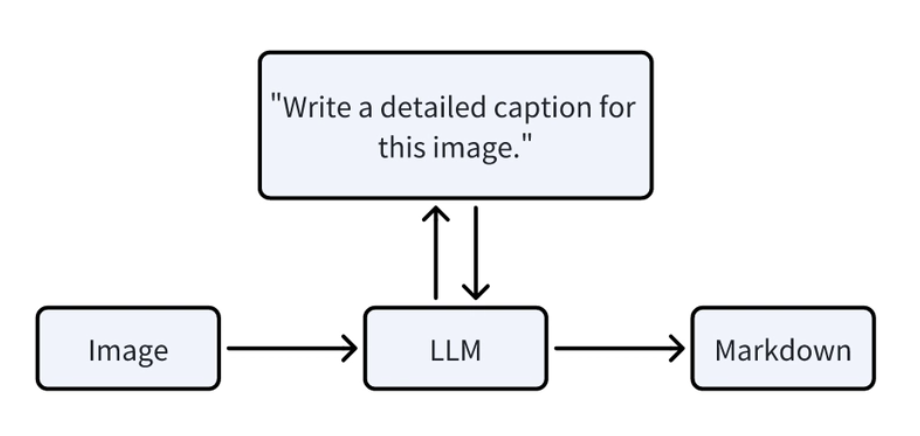SAP Business Technology Platform (SAP BTP) is an integrated offering comprised of four technology portfolios: database & data management, application development & integration, analytics, and intelligent technologies. The platform allows users to turn data into business value, compose end-to-end business processes, and quickly build and extend SAP applications.
SAP BTP comes in two variants:Neo, which is being gradually phased out, and Multi-Cloud, which has been the default for new customers since 2020. SAP BTP lets you choose from different infrastructures and runtimes. Its services and solutions are available on multiple cloud infrastructure providers; it supports different runtimes, such as Cloud Foundry, ABAP, and Kyma, as well as multiple regions and a broad choice of programming languages.
In thisblog, I will explain the difference between each environment and how to choose the right one.
SAP BTP Environments
The environment in SAP BTP is a platform-as-a-service offering that offers runtime, services, and tools for developing and executing a business application. Environments are chosen at the subaccount level.
SAP BTP comes in two variants, offering different environments:
Multi-CloudCloud Foundry Environment:The Cloud Foundry environment contains the SAP BTP, Cloud Foundry runtime service, based on the open-source application platform managed by the Cloud Foundry Foundation.It enables developers to develop new business applications and business services, supporting multiple runtimes, programming languages (Node.js, Java, Python, etc.), libraries, and services.Scales easily and supports DevOps pipelines.It offers a broad range of services like machine learning, IoT, and SAP AI.ABAP Environment:The ABAP environment allows developers to create extensions for ABAP-based products, such as SAP S/4HANA Cloud, and develop new cloud applications.It supports the ABAP RESTful Application Programming Model, which includes SAP Fiori and Core Data Services (CDS).Ideal for extending on-premise SAP systems.Kyma Environment:The Kyma environment is a fully managed Kubernetes runtime based on the open-source project “Kyma.” It allows developers to extend SAP solutions with serverless functions and combine them with containerised microservices.Supports serverless capabilities and event triggers.Supports autoscaling and self-healing.Ideal for event-driven architectures.NeoNeo Environment:The Neo environment is provisioned from SAP data centers.It enables developers to develop HTML5, Java, and SAP HANA extended application services (SAP HANA XS) applications.SAP has announced that the Neo environment will be phased out on December 31, 2028, subject to terms of customer or partner contracts.
Comparison: SAP BTP, Kyma Runtime and SAP BTP, Cloud Foundry Runtime
Category
SAP BTP, Kyma runtime
SAP BTP, Cloud Foundry runtime
Based on open source
Based on Kyma open source
Based on Cloud Foundry open source
Developer profile
Developers skilled in Java, Node.JS, Python, and the SAP Cloud Application Programming Model (CAP), including SAP UI5 and Fiori Elements.
Developers skilled in Java, Node.JS, Python, and the SAP Cloud Application Programming Model (CAP), including SAP UI5 and Fiori Elements.
Micro Services
Yes
Yes
CAP Applications
Yes
Yes
SAP Cloud SDK support
Yes
Yes
Approuter support
Standalone approuter
Both Standalone and Managed Approuter
Supported buildpacks
Cloud-native buildpacks
SAP-managed and Cloud Foundry community buildpacks for several development languages.
Service mesh support
Yes
No
Elasticity
Yes
Yes
Autoscaling support
Yes
Yes, with the Application Autoscaler service.
In-system build & deploy using buildpacks
No
Yes
Platform-as-a-service: MTA support
No
Yes
Transport services
No
Yes
Minimum infrastructure size
3 Kubernetes Nodes, each 4 CPU and 16 GB memory. Roughly 40% is reserved to run the infrastructure.
1 GB Memory with ¼ CPU core.
How to choose the right environment – Cloud Foundry vs ABAP vs Kyma
It is essential to choose the right environment for your BTP account. Here are a few points to consider:
Evaluate your application requirements:If your application needs multi-cloud support and scalability, then Cloud Foundry is likely the best choice because of its multi-cloud and microservices capabilities.If you are extending an existing ABAP-based SAP system, then ABAP Environment is the most suitable.If you are building event-driven, serverless, or containerised applications, Kyma Environment would be the best choice as it supports Kubernetes and microservice architectures.Programming language and technology stack preferences:Cloud Foundry supports various languages like Java, Node.js, Python, Ruby, Go, and PHP.Kyma is Kubernetes-based and supports containers, microservices, and serverless functions.ABAP Environment uses ABAP and is ideal for customers with an existing SAP ABAP codebase.Assess your integration needs: Choose the environment based on the requirement to integrate with other SAP systems or third-party services. Cloud Foundry integrates easily with various SAP and non-SAP services.ABAP Environment integrates smoothly with existing SAP systems, especially S/4HANA.Kyma supports both event-based integration and Kubernetes orchestration, which is ideal for extending cloud applications.Consider scalability and cloud provider options:Cloud Foundry allows deployment on multiple cloud providers like AWS, Azure, and Google Cloud.Kyma supports Kubernetes, which is highly scalable for containerised workloads.ABAP Environment is SAP-managed and designed for extending SAP environments.Evaluate cost and pricing: Different environments have varying cost implications depending on:Services you require.Your cloud provider of choice.The scale of your application.
Conclusion: Which Environment to Choose?
Cloud Foundry: If you need multi-cloud support, microservices, and broad programming language support.Kyma: If you are building event-driven, Kubernetes-based applications or using serverless architecture.ABAP Environment: If you are extending SAP’s core applications (like S/4HANA) and working with an ABAP-heavy stack.
Best Regards,
Sudhir.
SAP Business Technology Platform (SAP BTP) is an integrated offering comprised of four technology portfolios: database & data management, application development & integration, analytics, and intelligent technologies. The platform allows users to turn data into business value, compose end-to-end business processes, and quickly build and extend SAP applications.SAP BTP comes in two variants:Neo, which is being gradually phased out, and Multi-Cloud, which has been the default for new customers since 2020. SAP BTP lets you choose from different infrastructures and runtimes. Its services and solutions are available on multiple cloud infrastructure providers; it supports different runtimes, such as Cloud Foundry, ABAP, and Kyma, as well as multiple regions and a broad choice of programming languages.In thisblog, I will explain the difference between each environment and how to choose the right one.SAP BTP EnvironmentsThe environment in SAP BTP is a platform-as-a-service offering that offers runtime, services, and tools for developing and executing a business application. Environments are chosen at the subaccount level.SAP BTP comes in two variants, offering different environments:Multi-CloudCloud Foundry Environment:The Cloud Foundry environment contains the SAP BTP, Cloud Foundry runtime service, based on the open-source application platform managed by the Cloud Foundry Foundation.It enables developers to develop new business applications and business services, supporting multiple runtimes, programming languages (Node.js, Java, Python, etc.), libraries, and services.Scales easily and supports DevOps pipelines.It offers a broad range of services like machine learning, IoT, and SAP AI.ABAP Environment:The ABAP environment allows developers to create extensions for ABAP-based products, such as SAP S/4HANA Cloud, and develop new cloud applications.It supports the ABAP RESTful Application Programming Model, which includes SAP Fiori and Core Data Services (CDS).Ideal for extending on-premise SAP systems.Kyma Environment:The Kyma environment is a fully managed Kubernetes runtime based on the open-source project “Kyma.” It allows developers to extend SAP solutions with serverless functions and combine them with containerised microservices.Supports serverless capabilities and event triggers.Supports autoscaling and self-healing.Ideal for event-driven architectures.NeoNeo Environment:The Neo environment is provisioned from SAP data centers.It enables developers to develop HTML5, Java, and SAP HANA extended application services (SAP HANA XS) applications.SAP has announced that the Neo environment will be phased out on December 31, 2028, subject to terms of customer or partner contracts.Comparison: SAP BTP, Kyma Runtime and SAP BTP, Cloud Foundry Runtime CategorySAP BTP, Kyma runtimeSAP BTP, Cloud Foundry runtimeBased on open sourceBased on Kyma open sourceBased on Cloud Foundry open sourceDeveloper profileDevelopers skilled in Java, Node.JS, Python, and the SAP Cloud Application Programming Model (CAP), including SAP UI5 and Fiori Elements.Developers skilled in Java, Node.JS, Python, and the SAP Cloud Application Programming Model (CAP), including SAP UI5 and Fiori Elements.Micro ServicesYesYesCAP ApplicationsYesYesSAP Cloud SDK supportYesYesApprouter supportStandalone approuterBoth Standalone and Managed ApprouterSupported buildpacksCloud-native buildpacksSAP-managed and Cloud Foundry community buildpacks for several development languages.Service mesh supportYesNoElasticityYesYesAutoscaling supportYesYes, with the Application Autoscaler service.In-system build & deploy using buildpacksNoYesPlatform-as-a-service: MTA supportNoYesTransport servicesNoYesMinimum infrastructure size3 Kubernetes Nodes, each 4 CPU and 16 GB memory. Roughly 40% is reserved to run the infrastructure.1 GB Memory with ¼ CPU core.How to choose the right environment – Cloud Foundry vs ABAP vs KymaIt is essential to choose the right environment for your BTP account. Here are a few points to consider:Evaluate your application requirements:If your application needs multi-cloud support and scalability, then Cloud Foundry is likely the best choice because of its multi-cloud and microservices capabilities.If you are extending an existing ABAP-based SAP system, then ABAP Environment is the most suitable.If you are building event-driven, serverless, or containerised applications, Kyma Environment would be the best choice as it supports Kubernetes and microservice architectures.Programming language and technology stack preferences:Cloud Foundry supports various languages like Java, Node.js, Python, Ruby, Go, and PHP.Kyma is Kubernetes-based and supports containers, microservices, and serverless functions.ABAP Environment uses ABAP and is ideal for customers with an existing SAP ABAP codebase.Assess your integration needs: Choose the environment based on the requirement to integrate with other SAP systems or third-party services. Cloud Foundry integrates easily with various SAP and non-SAP services.ABAP Environment integrates smoothly with existing SAP systems, especially S/4HANA.Kyma supports both event-based integration and Kubernetes orchestration, which is ideal for extending cloud applications.Consider scalability and cloud provider options:Cloud Foundry allows deployment on multiple cloud providers like AWS, Azure, and Google Cloud.Kyma supports Kubernetes, which is highly scalable for containerised workloads.ABAP Environment is SAP-managed and designed for extending SAP environments.Evaluate cost and pricing: Different environments have varying cost implications depending on:Services you require.Your cloud provider of choice.The scale of your application.Conclusion: Which Environment to Choose?Cloud Foundry: If you need multi-cloud support, microservices, and broad programming language support.Kyma: If you are building event-driven, Kubernetes-based applications or using serverless architecture.ABAP Environment: If you are extending SAP’s core applications (like S/4HANA) and working with an ABAP-heavy stack.Best Regards,Sudhir. Read More Technology Blogs by Members articles
#SAP
#SAPTechnologyblog










